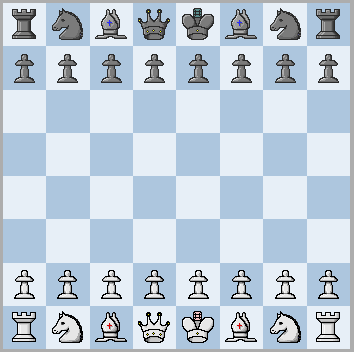

In Phalanx Chess a pawn ("Phalanx pawn") can change place with a piece standing before it. If a pawn can move forwards to a square occupied by a piece of any colour, then the pawn and the piece can change place, also at the pawn's double-step. Exceptions are the king, and the friendly pawn, which cannot be displaced. Thusly, only kings and friendly pawns are capable of blocking a pawn. Should the pawn move to a piece placed on the last rank, then the pawn will be promoted to queen, without options. Otherwise regular rules apply.
While both pawns and pieces are affected by the swapping move, the relative values of pawns and pieces remain largely the same, although the pawn is slightly stronger. Although the pawn, in a sense, is stronger, it is also more vulnerable, while it has lost its blocking capability. Blocking an enemy pawn with a piece is now less efficient. The pawn's swapping move can be used to maneuver the pieces to better squares. There is also a more conservative variant where neither the kings nor the pawns, of any colour, are swappable. In another variant an umoved pawn cannot swap, which means that certain defensive measures are unavailable. Phalanx Chess was invented and implemented by undersigned, August 2007.
Phalanx: in military science, tactical formation consisting of a block of heavily armed infantry standing shoulder to shoulder in files several ranks deep. Fully developed by the ancient Greeks, it survived in modified form into the gunpowder era and is viewed today as the beginning of European military development (Enc. Britannica).
• You can download my free phalanx Chess program here (updated 2007-08-29), but you must own the software Zillions of Games to be able to run it (I recommend the download version).
• Don't miss my other chess variants.
© M. Winther 2007